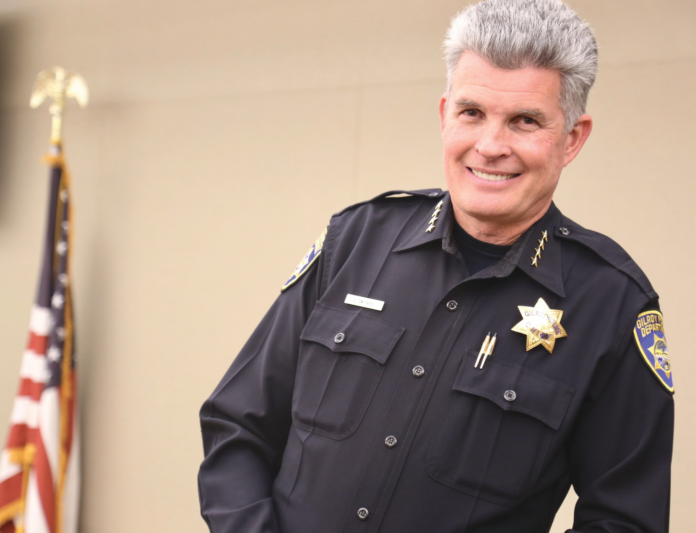Gilroy officials agree with a county grand jury report that says the city’s police department should expand its crisis intervention training programs in order to improve their responses to the growing volume of incidents involving mentally ill residents.
“The police department is planning to review existing training budgets, make policy modifications and provide additional training which meets or exceeds the Grand Jury’s recommendations,” reads a staff report by Gilroy Police Chief Scot Smithee, presented at the Aug. 6 council meeting.
The report includes Smithee’s detailed response to a May 9 Santa Clara County Civil Grand Jury report titled “Police and the Mentally Ill.” The council approved Smithee’s response, which mostly agrees with the report, on a 7-0 vote.
The grand jury report takes a close look at how well-prepared police throughout the county are to address mental health-related incidents. One of the grand jury’s chief criticisms of the Gilroy Police Department is that only the department’s 12 field training officers are required by local authorities to receive advanced Crisis Intervention Training (CIT). The grand jury recommended that all of Gilroy’s sworn officers and dispatchers receive advanced CIT.
Smithee’s report noted that in addition to the 12 field officers equipped with CIT, an additional 21 Gilroy officers and five dispatchers have received between four and 40 hours of CIT.
“Although we exceed currently mandated training, the police department agrees with the Civil Grand Jury’s recommendations that include expanding this training to all sworn officers and dispatchers,” reads Smithee’s Aug. 6 staff report.
If the Gilroy Police Department was fully staffed, a minimum of 22 more officers and eight dispatchers would need to receive the training recommended by the civil grand jury, the police chief’s report adds. As a result, police department staff will consider its training budget and make funding recommendations to the city council in time for the 2019-20 budget deliberation process. In addition to the additional CIT training, the local department will also look into further Tactical Communication and De-escalation Techniques training for officers.
The original grand jury report gives a comprehensive summary of the level of training that officers in each of the county’s law enforcement agencies have received in responding to mentally ill subjects.
The grand jury report lists a number of findings and recommendations for law enforcement agencies to improve and increase officers’ training in mental health crisis intervention. The full report can be found online at scscourt.org/court_divisions/civil/cgj/grand_jury.shtml.
Among local police agencies, Gilroy in 2017 had the lowest percentage of officers who completed additional critical incident training above and beyond the basic requirements, according to the grand jury.
The civil grand jury found that nine of the 31 people who died in officer-involved shootings from 2013 to 2017 were mentally ill. Twenty-two of the 56 total police shootings during that time involved someone with mental health issues.
There was one fatal officer-involved shooting in Gilroy during the 2013-2017 period studied by the grand jury. Mental health was not a factor in that incident, according to the report.
On Feb. 25, Gilroy resident Steven Juarez died during a struggle with police who were trying to arrest him. This death did not occur in the period covered by the grand jury report, and the DA’s office is still investigating that incident. The cause of Juarez’s death has not been released by the coroner’s office, and it is unknown if he was suffering a mental health crisis when officers responded to arrest him.
At the Morgan Hill Police Department, 85 percent of the agency’s 39 officers have completed the additional critical incident training beyond the minimum, the grand jury reported. There were no officer-involved shootings in Morgan Hill during the period covered by the grand jury.
The District Attorney’s office determined that 28 of the department’s 31 officer-involved shootings were justifiable under state criminal law. The office was still reviewing the other three cases at the time the civil grand jury report was compiled.














